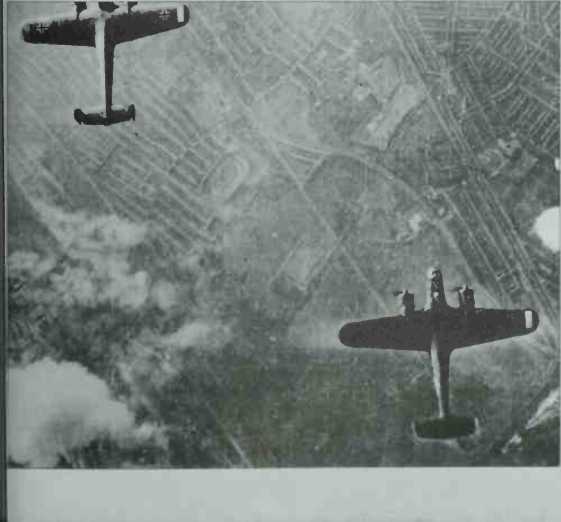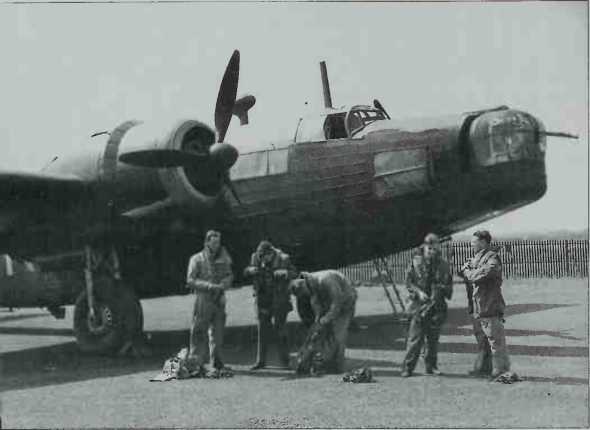While German bombers were pounding Britain during 1940 and 1941, the British people huddled night after night in stuffy, cramped shelters and comforted themselves that Royal Air Force bombers were delivering similar punishment to the citizens of the Third Reich.

Sadly, they were mistaken. While British bomber crews were full of sterling young men with an iron resolve, their success rate in the first half of the war was low - and for very sound reasons.
Night bombing was far safer for the aircraft and crew, as the Ciermans had illustrated in their raids over London. RAF Bomber Command was keen to conserve these valuable assets too and favoured night-time bombing raids instead of exposing its forces to daylight risks.
But the Luftwaffe was operating from occupied airfields a short hop over the English Channel. For the Royal Air Force to strike at the heart of Germany, its pilots and planes had to fly many more miles than their German counterparts, in aircraft that were ill-equipped for long-distance flying or bombing. It took time and investment for new, heavier bombers to be commissioned for the task.
The already limited resources of Bomber C'ommand were also stretched in many different directions. ¦Not only were there the demands of bombing raids over enemy territory but Coastal Command was in constant need of planes to combat the Ll-boat menace in the Battle of the Atlantic. With Britain under threat of isolation and annihilation if the U-boat peril was not seen to, the need to have planes available for maritime duties was paramount in 1940. In addition, the Middle East and North Africa required a complement of bombers, together with crews and parts - all of which required regular replacements. For a while, night bombing raids oer Germany were abandoned altogether so the force could focus on its duties elsewhere.
EARLY PROBLEMS
Operational shortcomings put the Royal Air Force at a disadvantage, too. For the first sorties were flown, rather informally, on an almost individual level. Following a joint briefing, each aircraft would depart at five-minute intervals following a course chosen by its own navigator to the target. Often, the crews would not catch sight of another plane until after their return. Given that each
For a while night bombing raids over Germany were abandoned altogether
Would offload its bombs over a wide area, the effect of single bomb drops on the ground were, of course, much less than an orchestrated raid involving greater numbers.
Added to this, the navigational aids available on planes at the time were wildly inaccurate. Crews conforming to their instructions were sure their bombs were away right on top of the targets. It was not the case. While bomber crews scored hits on clear nights in easily located target areas, bombs dropped on blacked-out Germany or on targets shrouded with industrial haze as often as not fell short. After the w'ar it was discovered that 49 per cent of the ordnance released by the British crews between .May 1940 and. May 1941 exploded in open countryside.
Navigators used maps, a sextant and a procedure of ‘dead-reckoning’ to work out their position, all of which could be fouled up by poor weather conditions. It meant that precision bombing by the RAF at night could be successful only on clear, bright, windless nights of which
Left: German planes on a daylight raid of London before night-time tactics were Introduced. Far left: The Renault works at Blllancourt after bombing by the Allies.

Above: A Wellington bomber and its crew pepare for an arduous night’s work over Hitler’s ‘Fortress Europe’.
There were precious few. Once again, it took many months before the difficulties of finding targets under cover of darkness were resolved.
Bomber Command was continuing to sustain losses from the missions over Germany, in exchange for precious few results. It soon became clear a new tactic was in order.
The principles of precision bombing - a technique almost impossible to execute successfully given the constraints of the era - were abandoned for ‘area bombing’. For this, not only was the target itself carefully chosen but also its neighbourhood. Thus a large factory producing vital components in the middle of open countryside would be overlooked in favour of a smaller factory among other small factories and industrial workers’ housing.
That way enormous damage could be caused for the same amount of effort and risk as was required in precision bombing. It gave a twofold purpose to bombing missions. Not only was there the clear-cut intention of halting Germany’s industrial output but, in addition, the chance to demoralise the people by bringing the war to their doorstep, making them homeless or otherwise hampering their daily existence.
The concept was fostered by Air Marshal Sir Richard Peirse, in charge of Bomber Command during 1941. Unfortunately, the failure of his forces to destroy three German warships, Scharnhorst, Gneisenau and the heavy cruiser Prinz Eugen, while they were in dock at Brest, northern France, did little to enhance the ebbing reputation of the force.
While these three sea monsters roamed, the British suffered terribly. Between them they were responsible for the loss of HMS Glorious, HMS Ardent, HMS Acasta as well as the armed merchant cruiser Rawalpindi and something in the order of 115,600 tons of merchant shipping.




 World History
World History









